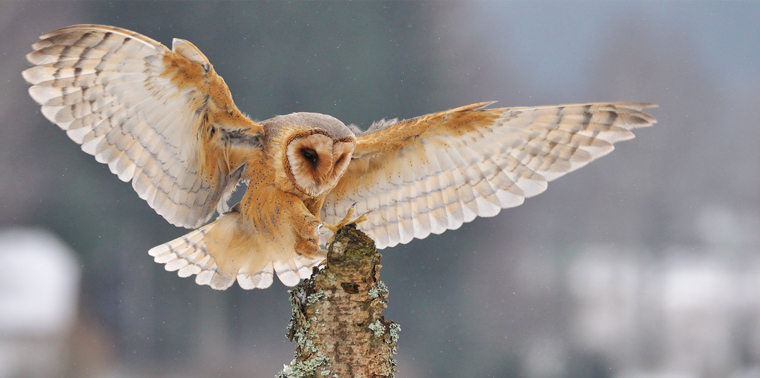April 12, 2017 — From migrating birds to pollinating bees to seed-dispersing plants, thousands of species depend on the quality of the aerosphere — the layer of air that surrounds our planet. Despite this, aircraft, wind farms, drones, telecommunication towers and other anthropogenic infrastructure increasingly crowd this critical habitat. Current species conservation efforts are generally focused on terrestrial and aquatic habitats, but not on airspace as a similarly important ecosystem. This needs to change, says a group of Canadian scientists in a recent article in Conservation Letters.
The authors want to see the airspace recognized and protected as an ecosystem that supports myriad species in a diversity of ways. It’s well known that many birds are killed in collisions with manmade structures — an estimated 44 million-plus per year in Canada alone. Efforts are underway to tackle this issue, but the authors argue for a more comprehensive framework that incorporates other threats such as aerial habitat fragmentation and chemical pollution, as well as for legislation that assigns responsibility for aerosphere conservation.
“The first step is for people to acknowledge that the space above us that looks so big and empty is actually a critical habitat for many, many animals,” says lead author Christina Davy, a wildlife research ecologist with the Ontario Ministry of Natural Resources and Forestry. “Once that’s in place, the doors open for the same kind of protection to be assigned to airspace that we already assign to terrestrial and aquatic habitats.”
Aerial habitats may be as important as wildlife corridors and marine parks for preserving biodiversity. The authors’ analysis of threatened vertebrate species suggests that roughly 20 percent rely to some extent on air space. The proportion may be much higher for the thousands of insects, plant seeds and microorganisms that drift or zoom through the air, they say, but right now, we don’t know what those numbers are. Research that investigates these gaps makes up only a small proportion of published studies in this field.
A recent surge in interest from the academic community may change that. “Scientists are producing really exciting research about how animals use the airspace,” says Davy, “But it hasn’t translated into the policy needed to conserve that habitat the way we do for other habitat types.”
For example, Davy says, with the right policy, an aerial protected area could be established to minimize harm to a host of migrating species like birds or insects. “It wouldn’t even need to be in place year-round to be an effective tool,” she notes.
The authors acknowledge that their proposal carries substantial logistical and political challenges. However, they argue that as humans continue to fill the skies with structures and aircraft, the airspace needs to be managed within a conservation framework that takes a bird’s-eye view. ![]()
Ensia shares solutions-focused stories free of charge through our online magazine and partner media. That means audiences around the world have ready access to stories that can — and do — help them shape a better future. If you value our work, please show your support today.
Yes, I'll support Ensia!
